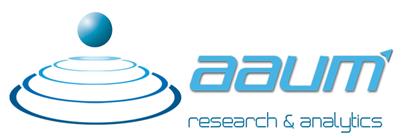Sep 27
2012
The first set of T20 matches are over and top eight teams have entered the second round. So what is the most preferred and the least preferred team among the eight? Lets have a glimpse of what the people in the social media have expressed

Sep 11
2012
AAUM partnered with NABARD for building credit scoring models for SHG’s (Self Help Group). AAUM NGO partners IRCDS in Thriuvallur district, Blossom Trust and Sornambal Trust in Virudhunagar district approached 1000 SHGs and collected data on financial, socio-economical and wealth data’s of the SHG individuals to build scoring models by which credit worthy of individuals/SHG’s are rated which helps the loan providers to take decisions. A mobile application with a back end web application has been developed to support the SHG’s in tracking their financial transactions.
The collected data of 1000 SHG’s was analysed to develop scoring algorithm using various analytical techniques like logistic, CART, and k-nn from a`training’ sample. The algorithm was applied to develop credit scores. Credit scores were devised for each group. The model was validated with `testing’ sample. The training given to SHGs was to devise credit rules and validate with bank/MFI stakeholders. The data captured was functionally built in SHG mobile sets to deliver quick scoring and compliance. It is easy to use forms enabled in the mobile phones to devise credit scores and usage of mobile phones has saved considerable efforts in the SHG account management.
The project has served SHG women to get used to technology through mobile phones. Aaum’s solution has addressed the specifics of group (not just an individual), credit score the group and finally has helped the banks, government, and NGOs to give loans and grants to the SHGs.
The exclusive research paper titled “Technologies Services and New Approaches to Universal Access and Rural Telecom” submitted to ITU in November 2009, by Prof. Ashok Jhunjunwala, Rajesh Kumar, Sonali Singh, Suma Prashant for International Telecom Union (ITU) highlighted accelerating mobile adoption in rural India. This has been a great inspiration to take up this project.
The benefits of SHG interface are:
- Grading was done by scoring algorithms on the data captured. No need for financial institutes/NGOs to perform this task.
- Simple process with no requirement to travel physically to SHG/NGO locations.
- Easy to use forms enabled in the mobile phones.
- Handling of accounts, books has saved considerable efforts in the SHG account management.
- Different level of access to different users.
This project has created a big socio-economic impact by strengthening the SHG-Credit linkage by connecting NGOs focusing on women development, Micro Finance Institutes (MFIs), banks, cooperative societies, and the state government.
Sep 5
2012
POTENTIAL OPPORTIUNITIES FOR SKILL DEVELOPMENT (Chennai & Trichy region) – ILFS project
IL & FS management approached Aaum to perform skills opportunity assessment in the districts which are closer to the multi-school skill development centre located at Chennai & Trichy region. The objectives were to know; industry requirements, candidate skill requirements and the willingness of candidate to pay for skill development. To meet these objectives, Aaum developed a structured framework consisting of various steps that were incorporated with each stage of the assessment.
IL&FS Skills Development Corporation (ISDC) is a joint venture between IL&FS and the NSDC (National Skill Development Corporation). It was established with an objective to build and manage 100 multi skill schools across India. The aim is to train around 2 million people over the next ten years in various skill sectors including textiles, engineering, construction, leather, auto and other service sectors.
To meet the core objectives of the study, an effective data collection strategy was designed which focused more on to find the demand and supply skills in the districts, to see if it would suit IL&FS. The assessment was done in eight districts of Tamil Nadu near Chennai and Trichy. i.e. Chennai districts – Tiruvallur, Kancheepuram, Tiruvanamalai and Chennai and Trichy districts – Nagapattinam, Dindugal, tanjavur and Trichy. For the research about three education institutions, three employers, three panchayat presidents, two association/Institutions, ninety six school/college students, one NGO/federation and fifty four rural candidates were identified in each district. The survey candidates were profiled by using wealth indicators, which is an index, computed based on the assets of the respondents.






Recent Comments